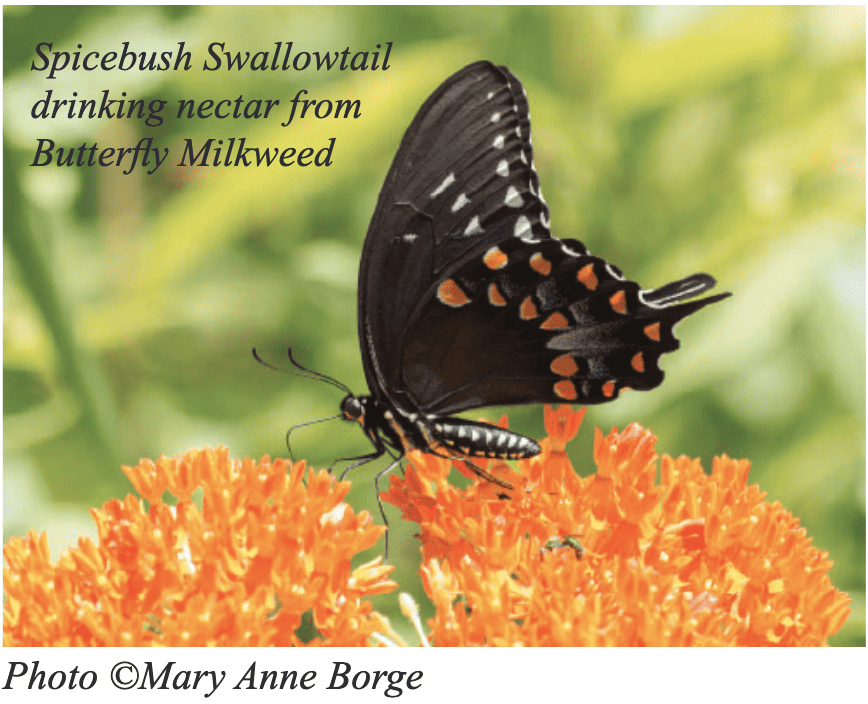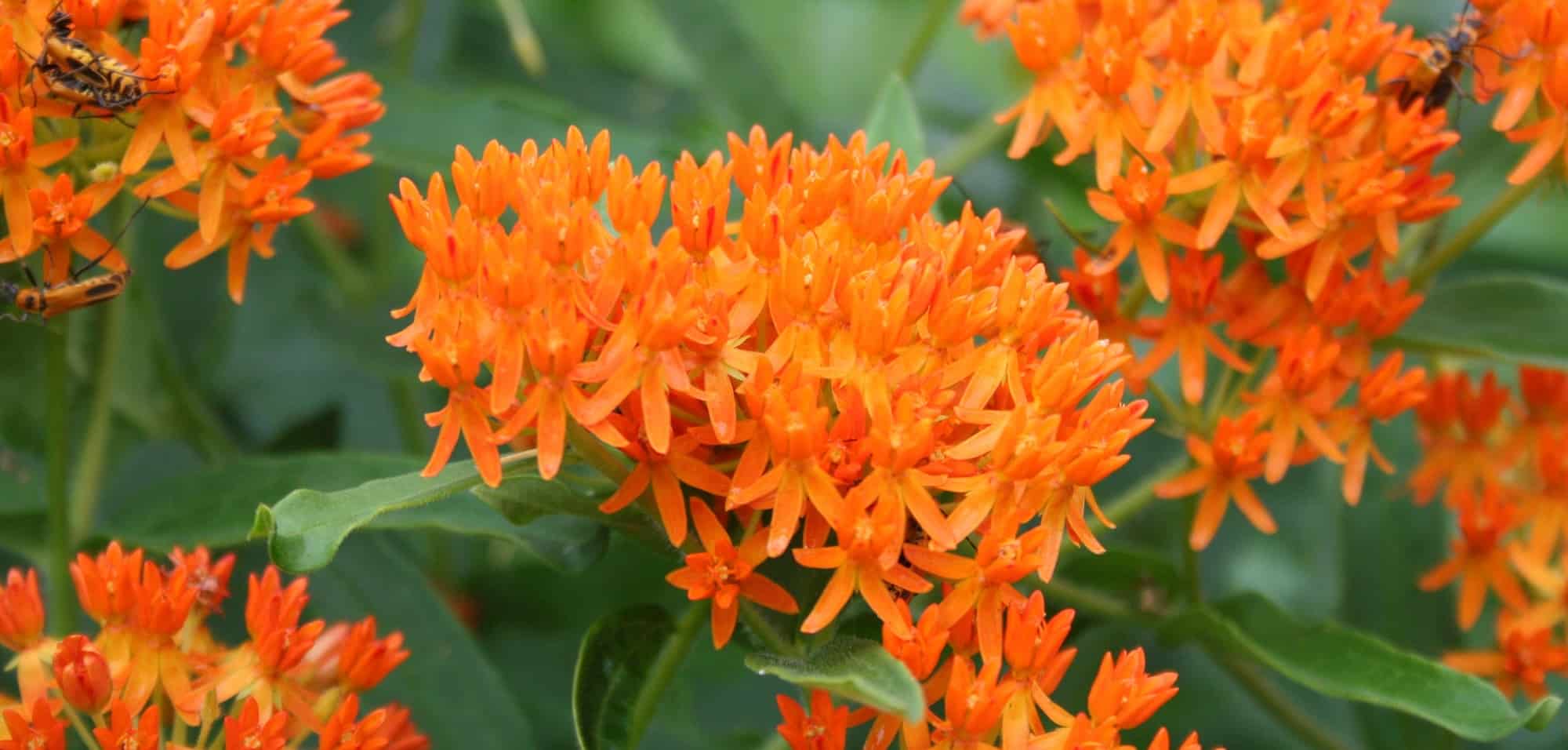Butterfly Gardening Basics: What to Serve
Food is key when planning your butterfly garden. Remember to feed both the butterflies and their “kids,” the caterpillars. Think of yourself on a road trip with your family: Everyone is hungry! Would you stop at a fancy restaurant that catered only to adults? Or would you look for an eatery with menu items that the kids would enjoy, too? Butterflies face the same challenge.
The primary source of food for most butterflies (and many moths) is nectar from flowers. So it’s important to provide a variety of plants that bloom at different times to ensure a continuous supply of nectar throughout the growing season. Butterflies are attracted to brightly colored, larger, open flowers, or dense clusters of small flowers, that provide a landing platform. Whether you are adding nectar plants or caterpillar food plants, try to include at least five of any given herbaceous species, clustered together so they are easy for butterflies to detect through sight and smell. For trees and shrubs, single specimens may be enough to attract your target species.

A caterpillar’s diet is completely different from that of its adult form. With a few exceptions, caterpillars typically feed on the leaves, flowers, or buds of a limited number of closely related plants. You may know that Monarch caterpillars depend on milkweeds as their only food plants, but it’s less well known that most butterfly and moth caterpillars, and even some bees and other insects, are similarly restricted in the food plants they can eat. A butterfly species can’t survive in an area where its required caterpillar food plants are not available.
These food specializations develop over thousands of years as the animals and plants in an area evolve together. A caterpillar depends on its native food plant not only for nutrition, but for an array of specialized chemicals that it (and/or the adult butterfly) may use for defense, and other critical life functions. As a result, using plants that are indigenous (native) to your area, whether they serve as caterpillar food, nectar plants, or both, will have the most benefit for the butterflies, moths, bees, even birds and other animals you hope to attract.
To learn more about plants that are native to your region, contact your local native plant society. The North American Native Plant Society has compiled a list for most states and Canadian provinces: www.nanps.org/native-plant-societies/.
To find a nursery near you that sells native plants, check this list for the United States from the Meadow Project: www.themeadowproject.com/resources/find-native-plants/.
The North American Native Plant Society provides a similar list for Canada: www.nanps.org/commercial-growers/.
Most butterfly field guides will help you identify the species you are likely to see and their required caterpillar food plants, or check with your nearest NABA chapter.

